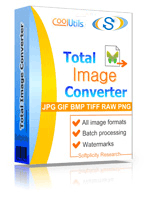1) Upload DIC file to convert
Drop files here, or Click to select
2) Set converting DIC to JPG options
3) Get converted file

 Total Image Converter
Total Image Converter
 JPEG, TIFF, PSD, PNG, etc.
JPEG, TIFF, PSD, PNG, etc. Rotate Images
Rotate Images Resize Images
Resize Images RAW photos
RAW photos Watermarks
Watermarks Clear interface
Clear interface Command line
Command line💾 Upload Your File: Go to the site, click on «Upload File,» and select your DIC file.
✍️ Set Conversion Options: Choose JPG as the output format and adjust any additional options if needed.
Convert and Download: Click 👉«Download Converted File»👈 to get your JPG file.




| File extension | .DIC |
| Category | Image File |
| Description | DIC (Digital Imaging and Communications) is a standard format for medical imaging that is widely used in healthcare facilities around the world. DIC files are created using digital radiography, computed tomography, magnetic resonance imaging, and other imaging technologies, and are used to store high-quality images of medical scans. DIC files are typically large and complex, containing not only the image data but also information about the patient, the type of scan performed, and other relevant details. Because of their importance in the medical field, DIC files are designed to be highly secure and tamper-proof, with strict protocols in place for handling, storing, and sharing the data they contain. To work with DIC files, specialized software is required, such as DICOM viewers, which can display and manipulate the images in the files. DICOM viewers also provide tools for analyzing and measuring the images, allowing healthcare professionals to make accurate diagnoses and treatment plans. DICOM viewers are available both as standalone applications and as browser-based tools that can be accessed from any device with an internet connection. |
| Associated programs | Total Image Converter |
| Developed by | |
| MIME type | |
| Useful links | |
| Conversion type | DIC to JPG |
| File extension | .JPG, .JPEG, .JPE, .JFIF, .JFI |
| Category | Image File |
| Description | JPG is the file format for images made by digital cameras and spread throughout the world wide web. Saving in JPG format an image loses its quality, because of the size compression. But at the end you have a much smaller file easy to archive, send, and publish in the web. These are the cases when an image's size matters more than image's quality. Nonetheless, by using professional software you can select the compression degree and so affect the image's quality. |
| Associated programs | |
| Developed by | The JPEG Committee |
| MIME type | |
| Useful links | More detailed information on JPG files |
Within the intricate and pivotal domain of medical imaging, the transition from DIC to JPG represents a fusion of specialized diagnostic capability with universal accessibility. This transformation is not just a mere change in file format, but a profound leap towards making critical medical data more shareable and comprehensible beyond specialized platforms.
DIC, often more formally recognized as DICOM (Digital Imaging and Communications in Medicine), is the de facto standard for storing and transmitting medical imaging information. Whether it's an X-ray, MRI, CT scan, or ultrasound, DICOM provides a consistent format that encapsulates both the image and the pertinent patient and procedural data. This holistic approach ensures that medical professionals have all the essential information paired directly with the image, allowing for accurate diagnosis and treatment.
JPG, on the other hand, is a widely recognized image format embraced across multiple sectors for its compactness and compatibility. Its universal support across devices and platforms makes it the ideal choice for sharing visual data without the constraints of specialized software. However, unlike DICOM, JPG only captures the image itself, stripping away any auxiliary medical data.
The journey from DIC to JPG is more than just a conversion; it's a bridge between the cloistered medical community and the broader world. Here's why this transition is significant:
However, it's crucial to recognize the trade-offs. While JPG facilitates ease of sharing, it lacks the comprehensive medical metadata that DICOM carries. It's also a lossy format, meaning some image quality might be sacrificed during the conversion. This trade-off might be inconsequential for educational or illustrative purposes but can be critical when high-fidelity images are necessary for diagnosis or treatment decisions.
In conclusion, the conversion from DIC to JPG symbolizes a broader theme in modern medicine: the balance between specialized capability and widespread accessibility. As technology continues to advance and the lines between medical professionals and patients become more collaborative, tools that facilitate clear communication and understanding, like the DIC-to-JPG conversion, will play an ever-growing role in the health and well-being of individuals worldwide.